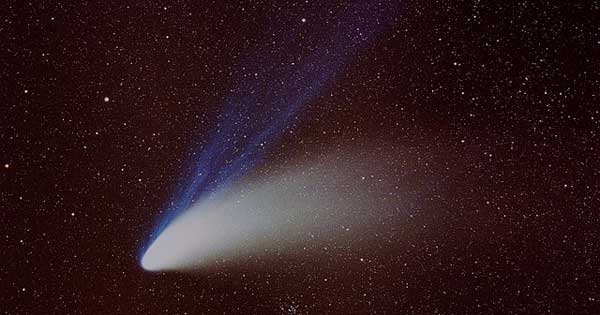
Aristotle, writing in 350 BCE in his History of Animals, pondered the origin of life. He favored spontaneous generation, where “some come from putrefying earth or vegetable matter, as is the case with a number of insects, while others are spontaneously generated in the inside of animals out of the secretions of their several organs.”
Obviously, Aristotle did not consider the possibility that the ingredients for life—amino acids, the building blocks of proteins—could form when icy comets crash into planets. This “shock synthesis” may explain how simple organic molecules formed in our Solar System 4.5 to 3.8 billion years ago, just before life arose on Earth. Now, an international team has recreated these conditions by firing a steel projectile at high velocity at ice mixtures similar to those found on comets. The shock, they report in a paper published on September 15, 2013, triggered the formation of several amino acids and their precursors.
As space scientist Mark Price of the University of Kent at Canterbury in the U.K. explains in an email exchange, impact craters can be found everywhere in the Solar System, along with the ingredients for life: water and carbon dioxide locked up, in the form of ice, on the surface of icy moons and comets. The antecedents of amino acids, including ammonia and methanol, have also been discovered on comets including Halley and Hale-Bopp. “Therefore, to synthesize amino acids, all that has to happen is for an icy comet to impact a surface, or a rocky asteroid to impact an icy surface,” he wrote to me.
Price and colleague Zita Martins of Imperial College London used the University of Kent’s light gas gun—a hefty contraption used “for investigations of hypervelocity impact phenomena”—to fire the two-millimeter-diameter projectile at ice mixtures analogous to those found on a comet. (The mixtures consisted of ammonia gas dissolved in water, carbon dioxide, and methanol ice.) Analysis of the resulting mix showed the presence of two simple amino acids encoded by genes: alanine and glycine. What this tells us, according to Price, is that “amino acids and other complex organic molecules considered to be necessary for the development of life are widespread throughout the Solar System. This therefore implies that if the conditions are right, then life could have evolved elsewhere in the Solar System.”
I had only one other question: Does firing a light gas gun produce a satisfying bang? Not really. “It actually is quite unexciting,” Price wrote. “If it works correctly, all you hear is a dull clunk, as the whole gun is under vacuum. After each shot, the launch tube and barrel have to be cleaned, so we spend more time cleaning than firing.”

